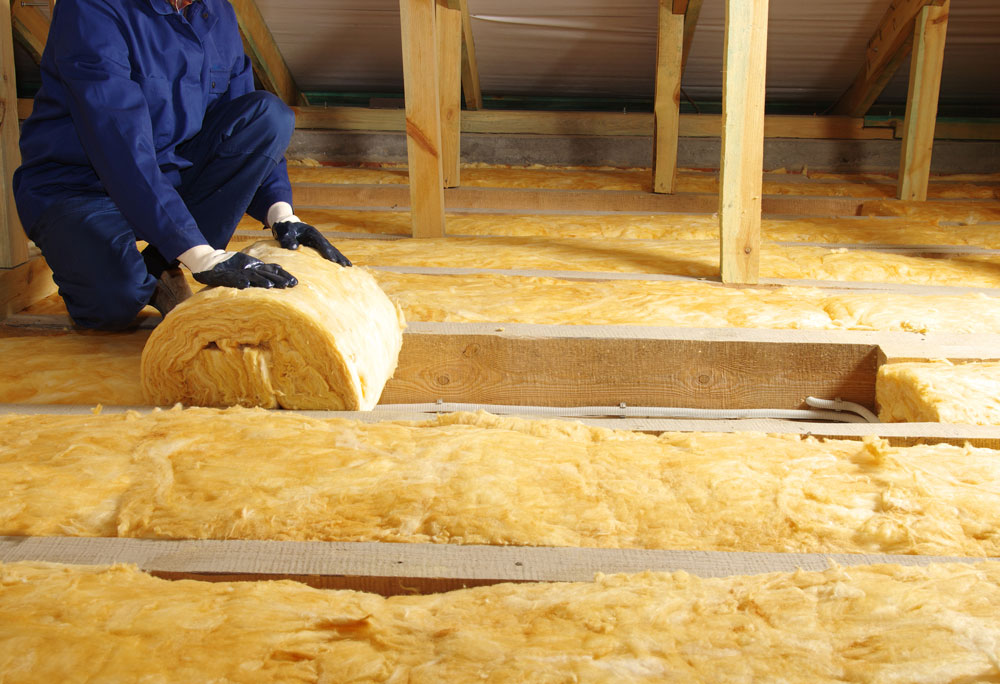How Does Loft Insulation Work?

CONTENTS
- How does heat escape from the home?
- The benefits of loft insulation
- What are the different types of loft insulation?
- Which type of loft insulation should you choose?
- Contact us today
Loft insulation is one of the most effective ways to reduce heat loss and lower your heating bills. It can even allow moisture to pass through the roof and prevent condensation, minimising the chances of mould growth in your home.
Here at ICE Thermal, we offer our loft insulation installation services nationwide. Our tailored insulation solutions can reduce heat loss by up to 25% and have a 40-year lifespan to guarantee long-term savings.
Keep reading to learn more about loft insulation and how it works.
How does heat escape from the home?
Heat can escape from your home through various channels with windows, doors, walls, and roofs being the main culprits. Loft insulation acts as a barrier that slows down this process significantly.
Windows and doors are often where most heat loss occurs. Even small gaps can let out a lot of warmth. The best way to address this problem is by implementing double-pane windows or securing the spaces around borders.
Your home's walls could be letting out more heat than you realise, too. Cavity wall insulation fills the gap between inner and outer layers of exterior walls with material that reduces the amount of heat that can escape. It can help maintain indoor temperatures without requiring you to constantly crank up the heater.
Your roof or loft will lose plenty of heat, too, as warm air rises. Loft insulation slows down rising warm air, effectively trapping more indoors. It's not only effective during the winter, either. During the summer, it keeps cooler air inside.
You can learn more about the different ways to prevent heat loss in your home here.
The benefits of loft insulation
- It saves money: By retaining more warmth during cold periods and reflecting excess heat during hot seasons, you will spend less on heating bills.
- It's eco-friendly: Reducing energy consumption not only saves money but also lowers your carbon footprint, making loft insulation beneficial for our planet.
- It increases your property's value: Homes with efficient loft insulation are often valued higher due to their improved energy ratings.
To ensure maximum effectiveness and safety, professional installation of loft insulation is strongly advised over attempting it yourself. Professionals have the knowledge to choose suitable materials based on your specific needs and will install them correctly.
Should you install it yourself, you may select the type of insulation that is not optimal for your situation and might cause potential problems in your home. Improper ventilation, for example, can lead to dampness. You can learn more about thermal insulation and its benefits in this blog.
What are the different types of loft insulation?
Blanket insulation
Blanket insulation is usually made from glass or mineral wool. This adaptable insulation option is available in rolls and is easily tailored to snugly fit diverse spaces.
This type not only helps keep your home warm in winter but also cool in summer by reducing heat transfer through your roof. Additionally, because loft insulation rolls are available in various thicknesses, you can choose how insulated you want your loft to be.
Loose-fill insulation
If you have an irregularly shaped loft or there are lots of obstructions in it like pipes and wiring, loose-fill insulation could be the best solution for you. Made from lightweight materials such as cellulose fibre or mineral wool, this option allows for easy filling around obstacles without compromising on performance.
The material is simply blown into place using specialist equipment to ensure even coverage and an optimal insulating effect. This method effectively seals gaps where heat might escape, keeping your home warm all year round.
Insulation boards
These rigid panels offer another effective way to combat heat loss through the roof. Constructed from materials like polystyrene or polyurethane foam, these boards provide excellent thermal resistance with minimal thickness. They are ideal if there is not much headroom in your attic.
Easily cut to the size and shape needed, they are perfect for insulating flat roofs or areas where higher levels of compression strength are required. They can even double up as storage platforms once installed correctly.
Blown-fibre insulation
This technique is similar to loose-fill insulation but uses fibreglass materials instead. A machine blows these fibres into place between joists within the loft area, creating a thick layer that traps air and reduces thermal bridging (heat passing through solid materials). It’s highly efficient at reaching those hard-to-get spots and ensures no corner is left uncoated.
Which type of loft insulation should you choose?
Picking the perfect attic insulation requires weighing various elements, like your house's layout and how much you are willing to spend. Your choice should consider the level of insulation performance you desire and the practicality for installation:
- If simplicity is key, blanket might be best as loft insulation rolls are easy to deploy.
- In cases where access poses a challenge or there are many obstructions within the space, loose-fill is optimal.
- To maximise the living area beneath insulated sections, boards are the best type of insulation.
- If your loft has a complex layout and you want minimal disruption during installation, opt for blown-fibre.
Contact us today
Our thermal insulation engineers have access to only the highest quality insulation materials and can satisfy the most unique requirements. Our 5-stage installation process means we always deliver effective solutions.
Get in touch with our friendly team today on 020 3376 4802 or [email protected] to learn more about our loft insulation installation services.

Speak with me today,
I’m here to help
By asking you a few questions either via phone or email I can immediately provide a realistic estimation of the cost.

Why choose us?
- Cater to a wide variety of cleaning situations
- Nationwide coverage, available 24/7
- Cater to commercial and domestic clients
- Free survey provided prior to quotation
- Emergency response team
- Offer a bespoke service designed to suit all your needs
- All technicians hold professional health and safety qualifications, including BICSc, IOSH, Dewpoint Professional & Safe Contractor
We’re fully accredited
We place best practise, professional expertise and health and safety at the core of our business. We’re fully compliant with all legal obligations. You can view a list of our accreditations below, or visit our Health & Safety page for more information.











-RGB-small.1707319151.jpg)




















